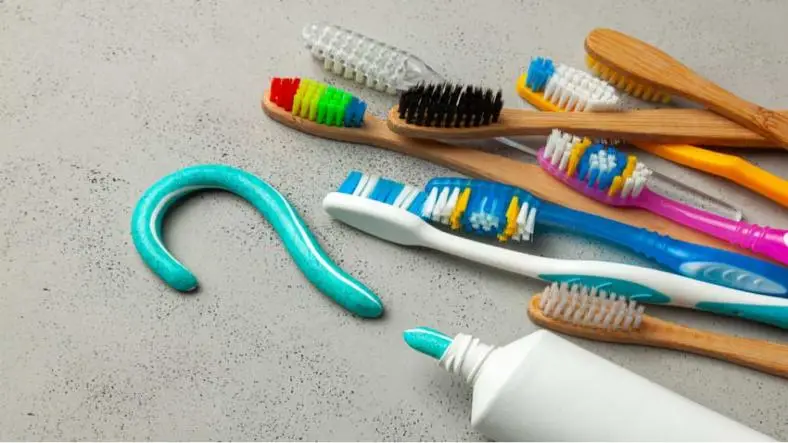Choosing the right toothbrush is fundamental to maintaining optimal oral health. With so many options available, manual, electric, soft, medium, or hard bristle selecting the best toothbrush for your needs can be overwhelming.
This guide aims to simplify the decision-making process by highlighting key factors to consider, ensuring you choose a toothbrush that effectively supports your oral hygiene routine.
1. Brush Type: Manual vs. Electric
- Manual Toothbrushes: These are the traditional option and can be highly effective when used correctly. They are cost-effective, portable and come in a variety of sizes and bristle types. Manual toothbrushes require proper technique and consistency to be effective.
- Electric Toothbrushes: Electric or power toothbrushes offer additional features such as oscillating, rotating, or sonic movements that can enhance cleaning efficiency. They are particularly beneficial for individuals with limited dexterity or those who want a more thorough cleaning. Many electric toothbrushes come with timers and pressure sensors, helping ensure you brush for the recommended two minutes with the right amount of pressure.
2. Bristle Type: Soft, Medium, or Hard
- Soft Bristles: Dentists generally recommend soft bristles as they are gentle on gums and enamel while effectively cleaning teeth and removing plaque. They are suitable for most people, including those with sensitive teeth or gum issues.
- Medium Bristles: Medium bristles offer a balance between cleaning effectiveness and comfort. They can be useful for individuals with healthy gums and teeth but may be too abrasive for those with sensitive gums or enamel erosion.
- Hard Bristles: Hard bristles can be too abrasive and may cause gum recession or enamel damage. They are generally not recommended, especially for those with sensitive teeth or gum conditions.
3. Brush Head Size and Shape
- Head Size: A smaller brush head can better reach the back teeth and harder-to-reach areas, allowing for more effective cleaning. A larger head might cover more surface area but may be less effective at accessing tight spaces.
- Shape: Toothbrush heads come in various shapes, including rectangular and oval. Choose a shape that allows you to comfortably access all areas of your mouth.
Google Ad 1
4. Handle Design and Grip
- Handle Comfort: An ergonomically designed handle can improve comfort and control, especially for those with limited dexterity or arthritis. Look for a handle that fits comfortably in your hand and provides a secure grip.
- Non-Slip Grip: Many toothbrushes feature a non-slip grip or textured handle, which can be beneficial for maintaining control during brushing, especially when wet.
5. ADA Seal of Acceptance
- Certification: Look for the American Dental Association (ADA) Seal of Acceptance on the toothbrush packaging. This seal indicates that the toothbrush has been tested for safety and effectiveness. It ensures that the toothbrush meets ADA standards for oral health.
6. Special Features
- Timers: Some electric toothbrushes come with built-in timers to ensure you brush for the full recommended two minutes.
- Pressure Sensors: Many electric toothbrushes feature pressure sensors that alert you if you are brushing too hard, helping prevent gum damage and enamel erosion.
- Replaceable Brush Heads: If you choose an electric toothbrush, consider models with replaceable brush heads. This can be more cost-effective and environmentally friendly compared to replacing the entire brush.
7. Personal Oral Health Needs
- Orthodontic Braces: For those with braces, orthodontic or specialized toothbrushes with V-shaped bristles can help clean around brackets and wires more effectively.
- Sensitive Teeth: If you have sensitive teeth or gums, opt for a toothbrush with soft bristles and gentle brushing modes, especially in electric models.
Google Ad 2
8. Frequency of Replacement
Regardless of the type of toothbrush you choose, it's important to replace it regularly. The American Dental Association recommends changing your toothbrush or brush head every three to four months or sooner if the bristles become frayed. Regular replacement ensures that your toothbrush remains effective and hygienic.
9. Cost and Budget
- Manual Toothbrushes: Generally more affordable and widely available, manual toothbrushes can be a cost-effective option if used correctly.
- Electric Toothbrushes: While typically more expensive, electric toothbrushes often come with advanced features that can enhance brushing effectiveness. Consider your budget and oral health needs when making your choice.
10. Consult Your Dentist
For personalized recommendations, consult your dentist. They can provide guidance based on your specific oral health needs, such as recommendations for special toothbrushes or techniques suited to your condition.
In conclusion, choosing the best toothbrush for your oral health involves considering various factors such as brush type, bristle softness, head size, handle design and special features. Whether you opt for a manual or electric toothbrush, selecting one that aligns with your personal needs and preferences will help maintain optimal oral hygiene and overall dental health. Regular brushing, along with routine dental check-ups, will support a healthy smile for years to come.
Thanks for reading the dentofacts article, for more such articles read our PeoplesBLOG.















